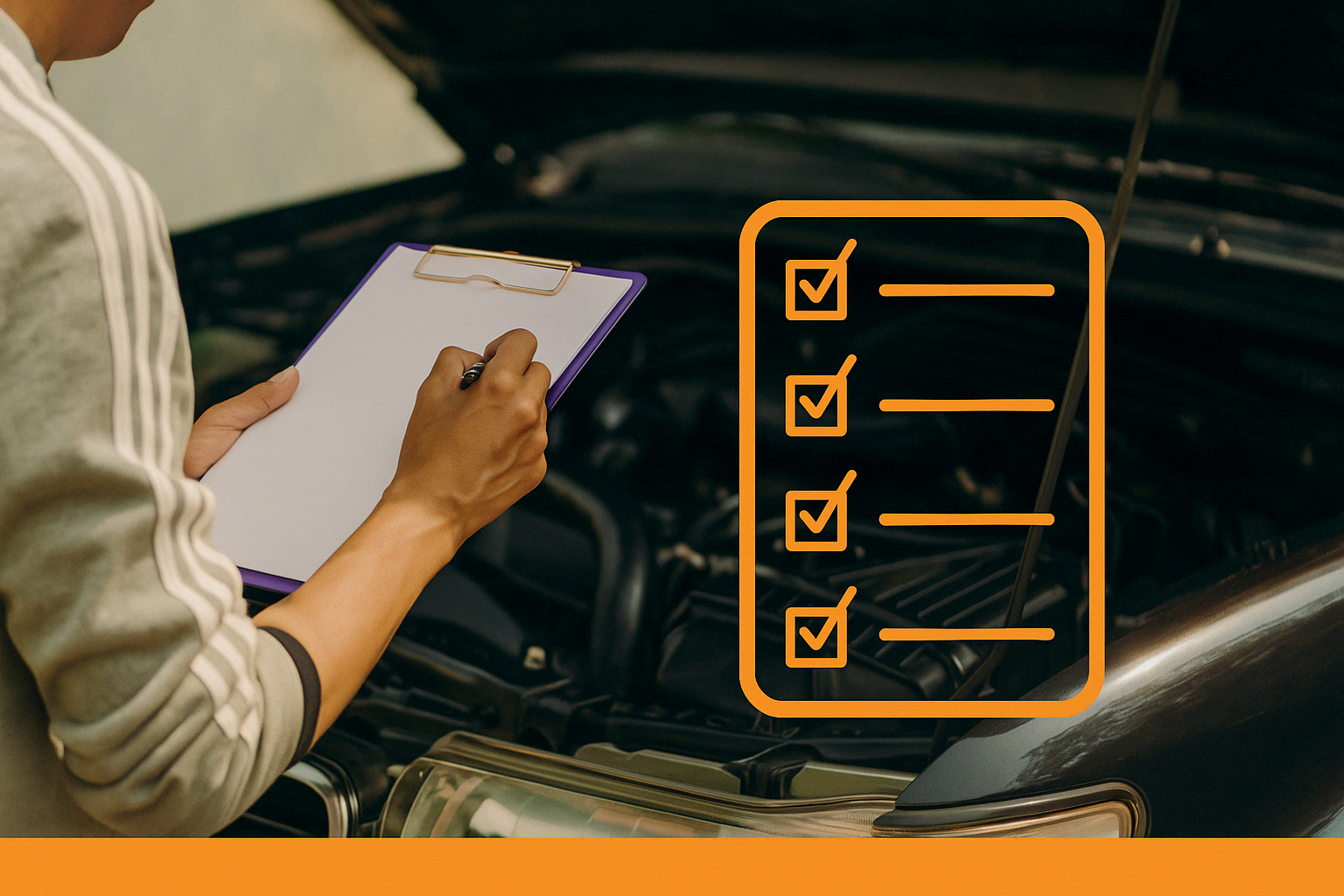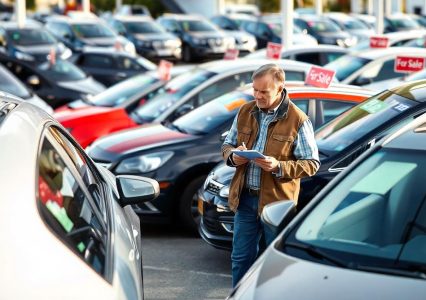Many Australians find purchasing a pre-owned vehicle to be a cost-effective choice. A solid understanding of potential issues and knowing what to inspect can prevent future surprises. Pre-loved vehicles often represent a sound bargain because the steepest depreciation has already been absorbed. Without the security of an extended new-car warranty, it is crucial to be vigilant.
This guide provides a clear outline of checks to perform when buying a used car from private sellers and dealerships, along with a practical checklist for buying a used car.
Checklist to Inspect a Used Car Before Buying
Private Seller Purchases
Purchasing from a private seller can result in savings but comes with increased risk. Many private sales involve dishonest practices that might not be obvious at first glance. Therefore, a careful review of the car’s history is necessary.
Verifying History and Ownership
A key early step is to obtain a car history report. Check if the vehicle has ever been involved in significant crashes or if it has been written off previously. Sometimes, fraudulent schemes involve replacing a valid Vehicle Identification Number (VIN) or compliance plate from a damaged vehicle with another car of the same make and model. This kind of a practice facilitate a stolen vehicle to be re-registered and sold.
Before negotiating, ensure the seller is the registered owner. Ask to see the registration papers detailing the chassis number/VIN and engine information. Match these with the build and compliance plates, located on a door pillar and the engine bay. This verification ensures the vehicle’s manufacturing date matches the registration details. Be sure to review the licence plate details on the registration papers, as a physical compliance plate confirms that the car once met Australian design and safety standards. Current regulations now offer this information on the online RAV register.
Visual and Mechanical Checks
You can identify potential issues during a careful initial inspection. Whether you know much about cars or not, keep a checklist to inspect a used car before buying:
- Body Condition: Look for any signs of repairs or damage. Uneven gaps between panels and inconsistencies in paint colour, such as overspray on the bumper, might indicate past collisions.
- Tyres: Examine all tyres, including the spare. Inspect the wear indicator bars built into the tread. Replace the tyres when the tread level reaches the indicator. Australian regulations require a minimum tread depth of 1.5mm, with a replacement suggested near 3mm.
- Engine Bay: Open the bonnet to inspect for oil or coolant leaks. Look for stained areas under the engine that might signal a mechanical issue.
- Fluid Condition: Check the oil using the dipstick. A uniform amber or brown shade is acceptable, while any change could suggest degradation.
- Rust and Corrosion: Survey the area under the bonnet and beneath the car for signs of rust.
- Interior Safety and Comfort: Inspect all interior features. Ensure that seatbelts are intact and that components such as electronic windows or sound systems work reliably. If you want to transport children, verify the availability of child-seat anchors and space.
- Service History: Review any log books and servicing records in the glovebox. A detailed record of services performed provides confidence in the car’s maintenance history.
Financial and Legal Checks
Ensuring the vehicle is free from any outstanding finance or nuisances is essential. It is vital to ensure that the vehicle is not encumbered by any outstanding finance or nuisances. Use the Personal Property Securities Register (PPSR) by inputting the VIN to check if there is any money owed. If finance remains on the vehicle, there is a risk that it might be repossessed even after you have paid. A clear PPSR report and a verified history status help protect your purchase from future legal complications.
Road Testing and Professional Inspection
Verify the history and condition, then perform a thorough road test. Test the vehicle over different surfaces, such as quiet residential streets, winding roads, and steep inclines. This diverse testing helps reveal issues that might not surface during a brief drive. Observe how the vehicle reacts from a cold start until reaching its normal operating temperature, as some faults become apparent only when the engine has warmed up.
A professional vehicle inspection provides extra assurance for buyers who are not confident in their mechanical expertise. Experts can spot hidden issues and identify potential areas for repair. This step is particularly valuable when negotiating the price or planning used car finance arrangements. A professional report and the service history help ensure that your used car purchase will not incur unexpected maintenance costs.
Dealership Purchases
Used car dealerships generally offer security that is not always available with private sellers. Most vehicles sold by reputable dealers come with statutory warranties, ensuring that the car meets minimum road safety and reliability standards.
Statutory Warranty and Inspection
The dealership’s warranty guarantees that major components such as the engine, gearbox, brakes, and safety equipment (including airbags) perform within acceptable standards. While dealers are required to check the PPSR for any existing finance on the car, buyers should still perform their verification.
Before finalising the purchase, review all documentation carefully. The dealer’s contract is legally binding with no cooling-off period, so confirming that all details match the vehicle is critical. A pre-purchase inspection by an independent professional can provide valuable insights for private sales. This report may also help with negotiations on the price, especially if specific components require replacement or repair soon.
Paperwork and Keys
When purchasing from a dealership, ensure you receive both keys, the original logbook, and a complete servicing history. These documents not only support your verification process but also guarantee that the vehicle adheres to the manufacturer’s safety and design standards.
Quick Checklist to inspect a second hand car
The following checklist to inspect a used car summarises the most critical areas of inspection for an efficient evaluation process. Use this checklist when assessing any used cars for sale.
- Overall Condition: Inspect the body, interior, and undercarriage for noticeable wear, damage, or signs of repair.
- Reason for Selling: Ask why the seller is getting rid of the car. The response may highlight issues or indicate that non-technical reasons drive the sale.
- Mileage: Check the odometer reading. Lower kilometres may indicate less wear, while higher figures suggest increased future maintenance.
- Damage History: Determine if the vehicle has ever been damaged or undergone write-off repairs. A comprehensive history report should reveal any such issues.
- Service Records: Make sure the used car has a well-recorded service history. Service and log books provide insight into how the car was maintained.
- Safety Certificates: Verify if the car possess a current Roadworthy Certificate (RWC) or Safety Certificate, demonstrating it fulfils the minimum safety standards.
- Vehicle Identification Number (VIN): Confirm that the VIN on the documentation matches that on the car, which helps to validate its identity.
- Engine and Interior Condition: Open the bonnet and inspect the engine for leaks. Check the condition of the oil and coolant and observe how the engine idles. Also, assess the boot, upholstery, trim, spare tyres, seat belts, air conditioning, battery, and electronic systems.
- Exterior: Examine the tyres, paintwork, doors, boots, and lights for any signs of damage or excessive wear.
- Undercarriage: Look under the car for rust and oil leaks and assess the condition of the exhaust system. These checks provide insights into the dependability of the vehicle’s structural integrity.
The Bottom Line
Purchasing a pre-owned car necessitates a disciplined approach. Whether you focus on used car finance options or explore various used cars for sale in Sydney, following the outlined steps ensures you make an informed decision. A rigorous check of a vehicle’s history, financial status, and mechanical condition helps safeguard your investment.
Reach Out to My Car Choice
If you looking for an used cars dealer in Sydney? My Car Choice features an outstanding selection of pre-owned vehicles that cater to every lifestyle and budget. Check out our inventory today and find the car that suits you perfectly. Enjoy a seamless buying experience with our trusted team by your side.



